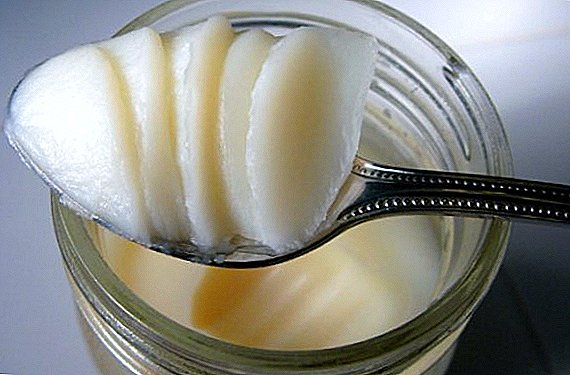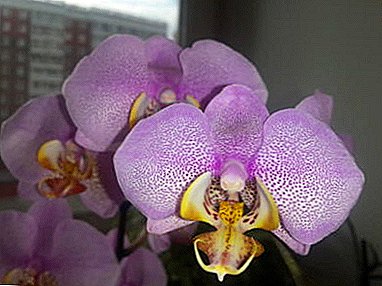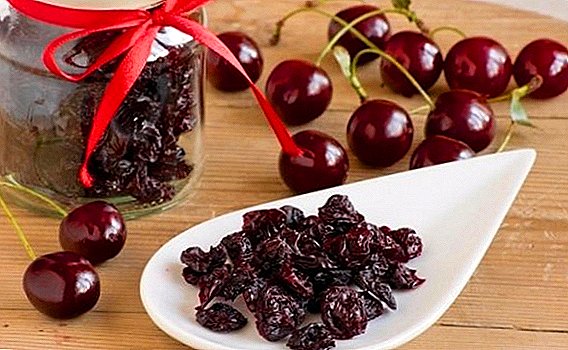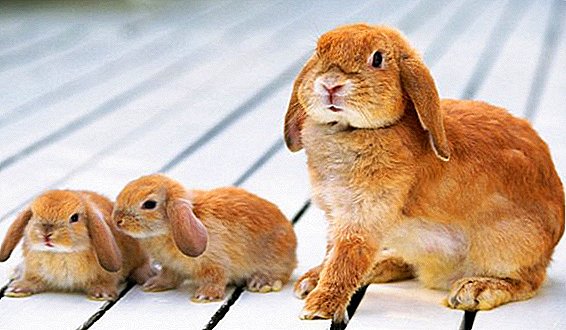 If we look at rabbit breeding as a business, at first glance everything seems rather simple. But in fact, the profitability of the enterprise directly depends on the demand for rabbit meat in your region. The demand for such products leaves much to be desired, due to the fact that such meat is much less popular than the more traditional varieties.
If we look at rabbit breeding as a business, at first glance everything seems rather simple. But in fact, the profitability of the enterprise directly depends on the demand for rabbit meat in your region. The demand for such products leaves much to be desired, due to the fact that such meat is much less popular than the more traditional varieties.
Rabbit breeding as a business
In fact, rabbit meat has great nutritional value and is very popular in many countries around the world. In the United States conducted scientific research aimed at breeding rabbits with meat with certain dietary qualities. In the seventies of the twentieth century in the USSR there were specialized farms that were exclusively engaged in breeding rabbits. But with the collapse of the Union, almost all such farms ceased to exist.  Now there is a shortage of these products, respectively, and the demand for it has fallen. However, many people know about the remarkable dietary qualities of rabbit meat, and it is quite possible, with an appropriate proposal, we would be happy to get it. And if you competently lead a business, this empty niche can be filled. However, be aware of some of the risks associated with this business:
Now there is a shortage of these products, respectively, and the demand for it has fallen. However, many people know about the remarkable dietary qualities of rabbit meat, and it is quite possible, with an appropriate proposal, we would be happy to get it. And if you competently lead a business, this empty niche can be filled. However, be aware of some of the risks associated with this business:
- temperature changes;
- low productivity;
- various diseases and infections.
Important! Rabbit breeding can be a very profitable business, for the reason that one animal during a year is able to reproduce a live weight 50 times larger than its own.
pros
Among the obvious advantages of commercial rabbit breeding are the following:
- profitability;
- good payback;
- useful qualities of rabbit meat;
- multidirectional business.

Minuses
Among the shortcomings should pay attention to the following:
- Rabbits are very demanding for cleanliness, even light dirt can literally kill them.
- Animals are extremely shy. They get attached to their owners quickly, but the presence of strangers for them is a huge stress, which instantly affects their health and productivity.
- Quite often, you can face a high mortality of young.
- Animals are quite demanding. They need to pay close attention and care.
- For commercial breeding of rabbit, you need to collect a large amount of documentation for meat products (veterinarian, sanitary station, etc.).
Where to begin
Investing money to start such a business requires a fairly moderate. If you plan to contain up to 10-12 hundreds of individuals, a typical plot of 0.6 hectares will be more than enough. The big advantage of this undertaking is the fact that most of the necessary equipment, with minimal skills in working with wood and metal, can be made independently (cages, drinking bowls, feeders). But you need to start with one important point: to determine the form of doing business.  In the event that you are planning to sell products on the market and supply them to your friends, it is enough to register the private farms (personal subsidiary farm). However, if you see your future business more ambitious, then you have to register as an individual entrepreneur (PI). In the first case, the control of your economic activity will be carried out by the administration of the village or city, in the second - by the appropriate authority of the state (Rosselkhoznadzor).
In the event that you are planning to sell products on the market and supply them to your friends, it is enough to register the private farms (personal subsidiary farm). However, if you see your future business more ambitious, then you have to register as an individual entrepreneur (PI). In the first case, the control of your economic activity will be carried out by the administration of the village or city, in the second - by the appropriate authority of the state (Rosselkhoznadzor).
Did you know? The main difference between rabbits and their close relatives, the hares, is that the rabbits at birth are blind and have no fur, while the hares are sighted from birth and covered in fur. In addition, rabbits live in burrows, and hares nest on the ground.The first step in the organization of business should be confident mastering the theoretical basis. In any case, you will need some knowledge. Learn more about the most common breeds, their characteristics. Pomonitorite thematic forums. It is likely you will be something incomprehensible, do not immediately give up. If you wish, and some perseverance, over time you will understand all the nuances.
- Find a place under the farm arrangement. Suitable options - cottage or village house. Prepare a place of residence for animals. Cells or a pit, a platform for their placement. When choosing a place, take into account such moments as waste disposal, ease of cleaning, constant water supply.
- You can start farming activities at any time of the year, as animals breed very quickly.
- Equip a room for storing feed. Hay and cereals need to be stored in the barn. For your own production of feed (to buy it in the necessary quantities for use in commercial dilution is unprofitable) purchase a crusher for grain and a granulator.
- Consider a place for resettlement of newborn rabbits. There will be many of them, since one rabbit is capable of bringing up to seven litters annually.
- Choose a breed that you will be breeding. Preference should be given to less demanding breeds that are suitable for beginner farmers, rather than more productive, but also more capricious. Now your main task is to gain experience and gain a foothold in the business.
- Rabbits should be purchased from experienced breeders who will advise you on issues of interest.
- Dig a cesspool (2x2x2), there will be a lot of manure. You can agree in advance with the gardeners on at least pickup, and with a successful version, and buying manure from you.
- Equip the place of slaughter. The room must have running water and sufficiently good ventilation, must comply with the standards required by the sanitary facility. It is advisable to slaughter animals in large quantities, and then carry out a thorough cleaning.
- Very useful would be the installation of at least the minimum possible number of freezers.
- Prepare food for half a year, assuming that one animal needs 14 kg of combined feed and 7 kg of hay. In the warm season (from May to September), animals enjoy eating grass, this fact significantly increases the profitability of the farm.

Sanitary requirements
Sanitary standards for breeding rabbits are reduced to approximately the following requirements:
- the room must be clean;
- regular disinfection;
- rodent killing and insecticide treatment;
- equipment of a separate cage for sick animals.
Important! With little rabbits it is very difficult to determine gender. Sex characteristics appear only at the time of maturation.
Purchase of young rabbits
After all the preparatory work, you can begin to acquire the young. It is more expedient to buy animal meat breeds or meat-skin directions. Do not pursue possible benefits, buying animals on the market from an unfamiliar seller, this is not the item of expenditure, which is worth saving. Find a breeder whose reputation is known, visit his farm, look at the conditions of animals, parents of young animals.
The best breeds for meat breeding are:
- Belgian giant;
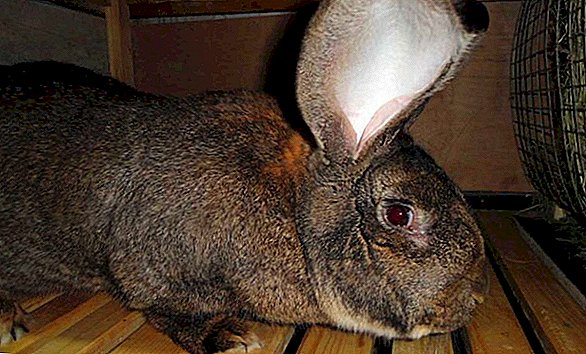
- German sheep;
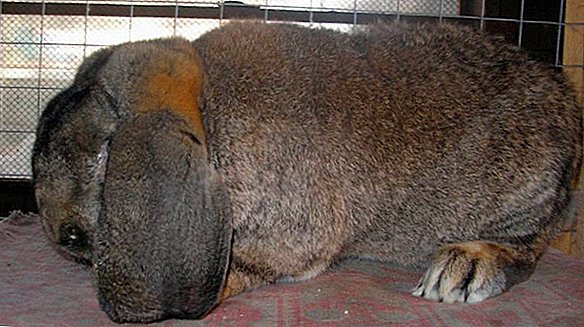
- white;
- New Zealand;
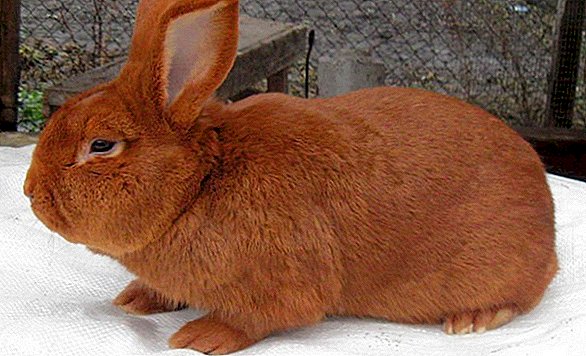
- gray giant and others.
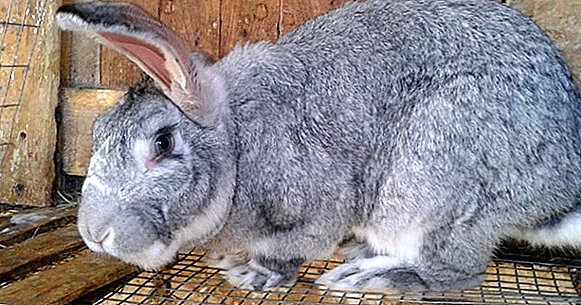
- weight and size of an adult rabbit;
- fertility;
- quality characteristics of fur;
- mortality and disease resistance of young and adult individuals;
- demanding care and others
Did you know? In the natural environment, the average life span of a rabbit is about 12 months, and in captivity 10 years is normal for an animal, some rabbits live to 15 years.In principle, a one-year-old male will do just fine. But in such a case, one should proceed from the consideration that a breeder is unlikely to want to sell a good producer in his prime. It is likely that there may be some problems with the animal. Carefully inspect each animal before purchase. Rabbit hair must be clean and shiny.
 Short-haired breeds should resemble plush toys to the touch.
Short-haired breeds should resemble plush toys to the touch.- An improperly formed animal, with various defects in the structure of the body, is immediately visible (hump, thinness, unnatural proportions of the body and limbs).
- Examine the animal for bulging bones and excessive body fat, often these signs may indicate malnutrition.
- A healthy animal keeps its head straight, its ears are pointing strictly upwards (except for the ram). Straight front paws. The rabbit must be calm, not scratching his ears, not turning his head, reacting little to what is happening outside his home.
- Pay attention to the rabbit nose. Moist mucosa should alert you - it can be a sign of illness.
- Abundant salivation and wet hair on the chin - almost a sure sign of stomatitis.
- Carefully inspect the eyes, in the event that they are watering, you can not touch the animal. If a rabbit constantly moves eyes, there may be problems with the vestibular apparatus.
- When viewed from the ears quite often you can see the scab. There is nothing terrible in it, you just need to prevent its development, to process the ears of the animal.
- If the rabbit has a dirty anus, then it’s not even worth watching. Problems with the digestive tract - perhaps the biggest headache of rabbit breeders. Some farmers, in case diarrhea could not be stopped within 24 hours, slaughtered the animal so as not to start a massive death. In the event that everything is dry in the area of the animal's anus and there is excrement inherent in a healthy animal in the cage, the examination can be continued. The entire area around the anus and genitals should be clean, dry, without signs of inflammation.
- You should also visually check the ability of rabbits to breed, but in rabbits it is very difficult to do, since the primary sexual characteristics of the males appear only at the time of puberty. In this matter, you should rely only on a familiar specialist, although even they are not insured against error.
Important! You should not buy rabbits with the expectation to earn exclusively on their skins. Well, if you find the sale of such raw materials to cover at least a small fraction of the costs. But it is not worth considering this as a substantial profit, due to the low demand for such raw materials.
For meat
- Giant - There are several types of breed (gray, white, Belgian, blue, etc.), having such common features as rapid growth, weight gain, good reproduction and high immunity. The weight of various giants can vary from 5 to 12 kg. Have high fecundity (for 1 okrol can bring up to 10-12 rabbits). Valuable properties has both meat and animal fur.
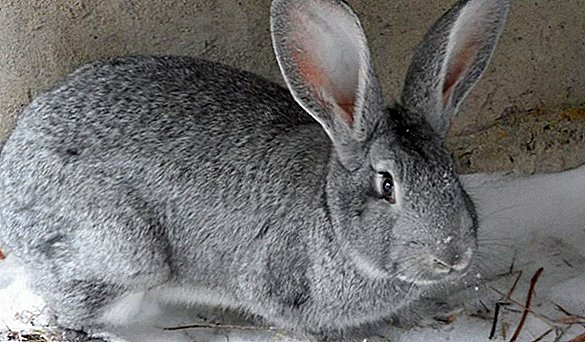
- Silver - meat breed, bred in the Poltava region in the early 50s of the twentieth century. Weight - 4.4-6.5 kg. The body length is about 56 cm. Quite large animals, although they have some compactness. Very early, weighs 1 kg at 1 month, then every month, when properly fed, adds 1 kg (at 3 months - 3 kg, at 4 months - 4 kg). The females are highly productive, for one okrol they bring an average of 8 cubs. They have high-quality skin and high meat productivity (about 60% at the age of 13-16 weeks).
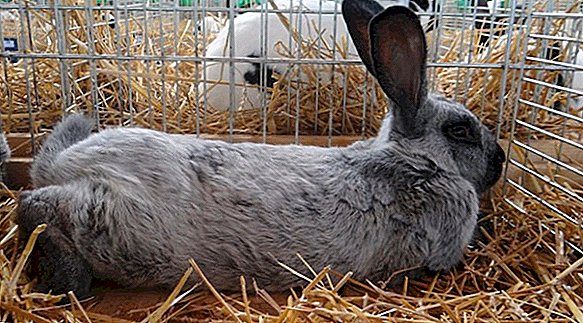
- Chinchilla - the most popular breed of Ukraine and Russia. Many future farmers begin with this breed. Powerful animals meat-skin type. Possess high productivity. The weight of an adult animal is 5.8-7.8 kg. For slaughter use of five-month animals. By this time you can get up to 3 kg of dietary high-quality meat and skin of excellent quality. The female is capable of 6–7 okrols a year, bringing 9–12 rabbits in each litter.
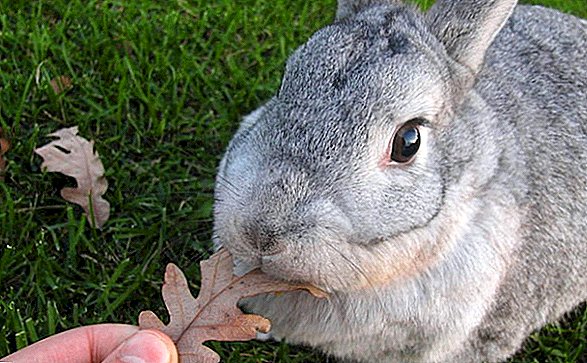
For skins
- Alaska - meat and sandpaper breed. Weight - 3.2-4.8 kg. The fur has a dense structure and a beautiful silver shade. They bring 6-7 litters per year, unpretentious in conditions of detention.
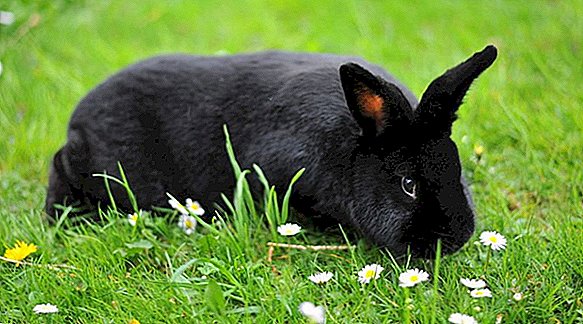
- Fiery black - breed oriented shkurkovy production. Weight - about 3 kg, the maximum reaches 5 kg. They have a long thick coat, valued by experts.
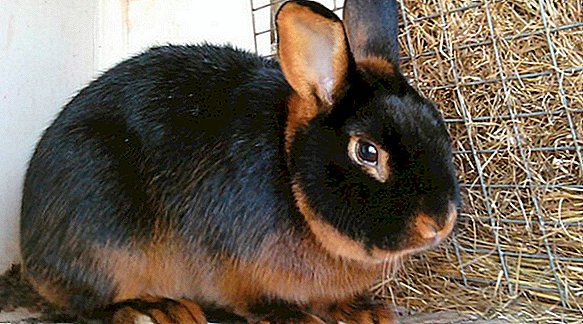
- Thuringian - breed is focused both on meat production, and the skin direction. It has excellent quality fur (a unique shade of nutty color) and dietary meat. However, the breed is not widespread, both in the post-Soviet space and in Europe. The weight of the animal is 2.6-4.2 kg. Sometimes lives up to 14 years, so it is often kept as a pet.
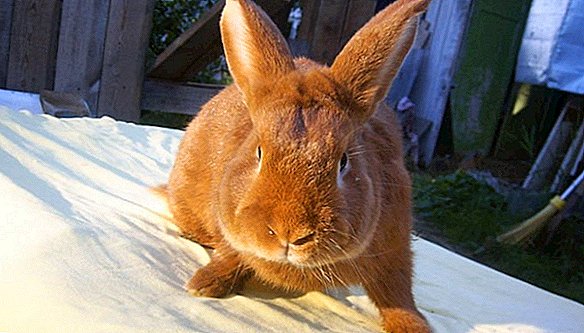
- White - a very popular breed, focused on fur production. There are white, black and blue color. Weigh an average of about 4 kg. The body has a length of up to 57 cm. Outcrop - up to seven rabbits. Brings 0.75–1 kg of high quality fluff.
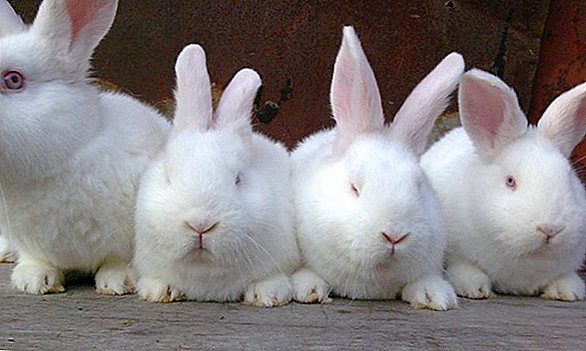
- Angora - exclusively downy breed. Slowly developing, it is necessary to pay much attention to the fur. Animal weight - 3.1 kg, fecundity - 6 okrols per year.
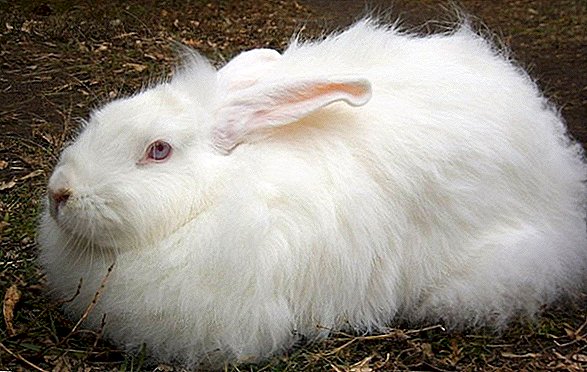
Did you know? Rabbits have a double queen. At the same time, they can carry two litters from different fathers.
Farm place
An ideal place for arranging a rabbit farm will be a country house or a rural house. In the event that you own such a property - fine, it will only be necessary to equip the site where the animals will live.
Habitat method
There are several basic ways of keeping rabbits:
- Sheds.
- Mikhailov system.
- Cell
- Pit
Learn how to care for rabbits at home.
Sheds
More comfortable and improved version of the cellular content. The cages, equipped with a convenient mechanism for feeding and cleaning, stand in rows on both sides of the aisle. The advantage of this method is the possibility of keeping very large livestock.  Install sheds under the roof or in rooms equipped with heating and ventilation (in cold climates). This method is great for large breeders.
Install sheds under the roof or in rooms equipped with heating and ventilation (in cold climates). This method is great for large breeders.
Mikhailov method
A mini-farm system named after its author. Used for industrial production of rabbit meat. In such a mini-farm, everything necessary for the life of animals is provided: food, water, removal of waste products.  These two methods (sheds and Mikhailov) are used in industrial production and large animal farms, at the initial stage of their business they are unlikely to suit you. And here we will tell about cellular and pit methods in more detail.
These two methods (sheds and Mikhailov) are used in industrial production and large animal farms, at the initial stage of their business they are unlikely to suit you. And here we will tell about cellular and pit methods in more detail.
Important! Rabbits grown according to Mikhailov’s method are called Mikhailov’s accelerators. Accelerates can be called representatives of any breed, as this is a way of breeding and maintenance, and not a breed.
Cell
The most popular method of farming among farmers. The cage is made of wood, the floor, the ceiling and the front side with the door are made of mesh. If there are cold winters in your area, you need to make mobile cells. In severe frost, the cell is brought into a warm barn.  The cage can have one or two sections, in the second case the rooms are divided according to their purpose: one for feeding, and the other for the nest. Put the cells in rows, close to one another. Several rows are stacked on top of each other. Recommended cell sizes in one section:
The cage can have one or two sections, in the second case the rooms are divided according to their purpose: one for feeding, and the other for the nest. Put the cells in rows, close to one another. Several rows are stacked on top of each other. Recommended cell sizes in one section:
- length - 1.2 m;
- width - 0.6 m;
- height - 0.6 m.
Did you know? A rabbit weighing 2 kilograms is able to drink the same amount of water as a dog weighing 10 kilograms.
Pit
The oldest method of keeping rabbits, close to natural conditions. Advantages of the method:
- the pit is easy to build with the help of available tools;
- several families living in the pit, provide a guaranteed good and healthy offspring;
- earliness increases;
- the pit does not require frequent cleaning;
- thanks to the natural activity of animals, healthy offspring is obtained;
- this way of keeping rabbits is in good health;
- in a small area you can keep a large livestock.

The disadvantages inherent in this method of content:
- infectious diseases affect all livestock;
- the pit is not suitable for breeding large individuals and breeds with valuable fur;
- the pit is quite difficult to clean;
- over time, rabbits degenerate, due to the connections of close relatives;
- not easy to catch rabbits.
But if you still decide to resort to this method, follow some recommendations:
- Choose a suitable place (groundwater should lie deep). You need to focus on such dimensions: a livestock of 200 animals needs a hole of 2x2 meters. Its minimum depth is 1.5 meters. Three walls are sewn up with slate, plastic or mesh, in order to avoid animals digging holes.
- The open wall is intended for arranging the nests. The bottom is covered by 0.15 m of sand, which is laid on the floor of the boards. Boards covered with hay, which is changed weekly.
- Над ямой необходимо соорудить навес с трубой, для создания воздушного потока. Не следует делать навес из металла, он сильно греется. Хорошим решением будет пластик.
- Не забудьте установить освещение, оно особенно необходимо зимой. Поильники и кормушки необходимо установить таким образом, чтобы возле них помещались все животные.
- Яму обнесите забором.
Important! You should not get a rabbit and a rabbit from one litter for mating. Such a pairing extremely rarely gives good offspring, more often weak rabbits are born, sometimes with congenital diseases.
Feed purchase
For normal growth and development of healthy livestock, rabbits need a balanced diet, in the winter it is necessary to give vitamin supplements. 
The following is the approximate rabbit diet (in grams):
- grass - 1500;
- Bean leaf - 1200;
- twigs - 600;
- beet tops - 200;
- tree foliage (large) - 600;
- carrot - 620;
- beets - 190;
- beet sweet - 580;
- boiled potatoes - 380;
- raw potatoes - 160;
- silo - 280;
- hay - 280;
- cereals - 160;
- legumes - 60;
- sunflower seeds - 30;
- bran - 90;
- fish meal or bone meal - 20;
- salt - 2.0;
- chalk - 2.0.
It is advisable to focus on the above rules, do not overfeed rabbits.
Did you know? In Australia, rabbits are considered a national disaster. Damage from them for agriculture and endangered species of animals is estimated at $ 600 million per year. The authorities do not strongly recommend keeping rabbits as pets, and in Queensland a fine of 30 thousand Australian dollars ($ 24,000) is provided for this.
Annual rabbit food needs (in kilograms):
In the quiet period:
- feed - 3.6;
- hay - 1.15;
- root vegetables - 3.3;
- greens - 4.6.
When mating:
- feed - 4.3;
- hay - 1.6;
- root vegetables - 3.7;
- greens - 5.5.
The little rabbit is pregnant:
- feed - 16.5;
- hay - 5.8;
- root vegetables - 15.8;
- greens - 22.7.

Baby rabbit when feeding:
- feed - 63;
- hay - 22;
- root vegetables - 58;
- greens - 82.
Familiarize yourself with the nuances of breeding rabbits of the Rex, California, Butterfly, White Giant, Baran, Black and Brown, Risen breed.
Rabbits at the age of 1.5-4 months:
- mixed feed - 9.7;
- hay - 3.3;
- root vegetables - 11.8.
Rabbit feeding scheme:
- morning - greens and wet food;
- Lunch and dinner - feed.
 Fresh water should be in the drinking bowls.
Fresh water should be in the drinking bowls.Business plan
In drawing up a business plan, we will proceed from the fact that there is a house in the village or a summer house, and you own minimal skills for doing your own hands (making and installing cells, putting electricity into a room, etc.). In addition, if you have a house in the village, it is possible to find a household assistant (helper) among the local residents-neighbors for quite a reasonable fee. He will do the simple work and look after the population during your absence.
Important! Rabbits need to be vaccinated against myxomatosis, pasteurellosis and VGBK. In addition, in order to avoid mass infectious diseases that can cause pestilence, one should not forget about regular cleaning and access to fresh air.
Costs
Expenditures at the initial stage of business development are indicated minimum, but most necessary. You need to understand that in the process of organizing a mini-farm, additional expenses may arise. But the items listed below will have to spend money in any case. An exception can be considered as a grain crusher and a granulator, but in this case you will spend more on the purchase of finished feed.
- materials for the manufacture of cells - 60 thousand rubles. ($ 1000);
- granulator and grain crusher - 30 thousand rubles. ($ 500);
- purchase of rabbits (100 heads) - 30 thousand rubles. ($ 500);
- feed costs - 75-150 thousand rubles. ($ 1250-2500);
- electricity, water, heating, veterinarian - 25 thousand rubles. annually ($ 400).

Income
- Meat - 100 individuals will give about 2 tons of meat (net weight) per year. Bulk to realize the meat can be about 200 rubles. ($ 3.5) for 1 kg. In the event that you have the opportunity to sell products directly to the buyer (acquaintances, relatives, in the market, etc.), profits will increase. As a result, we get - 400 thousand rubles a year ($ 6,600).
- Skins - the price of one normal-quality skins - 200 rubles. From 1,400 individuals, you can gain 280 thousand rubles ($ 4,400).
Did you know? Despite the seeming slowness, the rabbit can jump more than 2.5 meters in length and almost 1.5 meters in height.
Total
Having considered the rabbit breeding as a business, it can be concluded that such an economy can become quite profitable. However, such a business involves some difficulties and risks. It should be remembered that rabbits are often prone to mora. They require increased attention and care. These are the costs of labor, time and money, which can not be saved.  With the best of luck, you can recoup the investment and go into a plus in a year. But you should engage in commercial breeding of rabbits only if you are ready to devote almost all your time to this activity. It is not enough to hire a person, put him on the cells and demand a profit at the end of the year, you have to control everything yourself, at each stage. If you are ready for this, it remains only to wish you good luck in the field of rabbit breeding and the earliest possible return on your farm.
With the best of luck, you can recoup the investment and go into a plus in a year. But you should engage in commercial breeding of rabbits only if you are ready to devote almost all your time to this activity. It is not enough to hire a person, put him on the cells and demand a profit at the end of the year, you have to control everything yourself, at each stage. If you are ready for this, it remains only to wish you good luck in the field of rabbit breeding and the earliest possible return on your farm.
Reviews
















